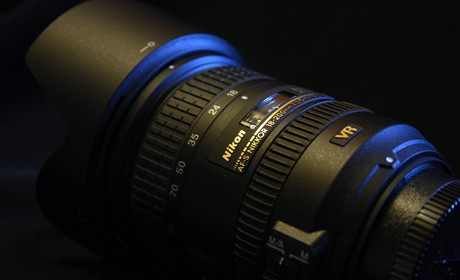
A UK newspaper uses the photo technology to reduce image size for its website
Credit: Image by slgckgc on Flickr. Some rights reservedA company has unveiled technology that reduces the file size of a video without affecting quality. The technology reduces the bit rate, with benefits for file storage and transfer.
It is not yet available for consumers, but could help journalists in the future to send video back from the field.
Beamr, the Tel Aviv-based company that has developed the technology, also offers apps to reduce the file size of photos.
Beamr currently offers two products: JPEGmini for Mac, which reduces the storage space required for photos, and Beamr, an iPhone app which optimises the delivery of photos.
The iPhone app can be used by journalists to send a collection of photographs by email, text message, Facebook or Twitter.
Users add photos from the iPhone camera roll, which creates a magazine-like layout of pictures. The app then reduces the size of the files and sends a link, which the recipient can use to download a zip file of the images.
JPEGmini
JPEGmini, an application for Mac costing £13.99, "takes a standard photo and reduces the file size by up to 80 per cent while keeping the same resolution and quality of the original photo", Dror Gill, chief technology officer of Beamr, told Journalism.co.uk.
Gill said tests show that a viewer cannot tell the difference between a JPEGmini photo and the original whether viewed on screen or printed.
"We see that photographers who go out on a mission – whether it's journalism, a wedding photographer or fashion photographer – they come back with thousands of photos. If they apply the JPEGmini optimisation their photos take up much less space."
Reduced disc space also means reduced file transfer and cheaper cloud storage.
Gill said that an additional benefit in reducing the file size of photos means 10 to 15 full resolution photos can be sent as an email attachment.
"If you have a group of photos to send to your editor, for example, you don't have to split them into separate emails, they can now go in the same email. And when you send this email it's a lot faster than if you would have attached the original photos because they are up to five times smaller than the original photos."
Beamr for iPhone
Gill said users of the free Beamr app can select 1,000 photos and send them in one click, and the photos can then be viewed or downloaded to any platform via zip file.
"It's a very easy way, and fast and efficient way, to deliver full resolution photos to someone else. So you can imagine that the time of delivery is much faster, because we reduce the file size by four to five times, and the data cost is lower."
He added: "We think for reporters in the field, if they are taking photos with their iPhone or they have a camera connected to the iPhone via wifi, they can save data charges by using Beamr."
Beamr Video
Gill explained that the video technology is based on same principles. It works by taking a standard video file and reducing the bit rate by up to four times, while retaining the original resolution and original quality of the video, Gill explained.
"So you take a video file and you make it smaller than the original and then you get the same benefits of storage, of transfer and of user experience."
The video technology is not yet available for consumers as a desktop or mobile application. It will soon be available as a cloud service aimed at providers of entertainment content, such as TV and film-streaming services.
JPEGmini enterprise
Gill added that "a major newspaper in the UK" uses the JPEGmini enterprise technology. The news outlet uses it to optimise photos for online, increasing the load speed of websites.
"Newspaper websites are very image intensive," Gill said. "Once all of those images are optimised and take up less space, they get downloaded to the user much faster."
Gill added that the technology also helps websites adapt to being viewed on high resolution displays.
He said websites are faced with having to increase the resolution of photos in order to support the new retina displays. This increases the file size and in turn the page load time, Gill said.
"To offset this increase we are seeing many of our customers using JPEGmini in order to optimise the files and get them back to the size of the files before the resolution increase."
The photo and video technology has been in development for three years and the company has applied for 35 patents. There is "pretty heavy science behind the scenes", Gill said.
Free daily newsletter
If you like our news and feature articles, you can sign up to receive our free daily (Mon-Fri) email newsletter (mobile friendly).
Related articles
- New project InOldNews wants to improve representation in video journalism
- How AI can help journalists track MPs financial interests
- 38 mojo apps from BBC trainer Marc Blank-Settle
- Tools for journalists: Missing Perspectives Directory, for connecting newsrooms with women
- 15 online communities for journalists you should know about









